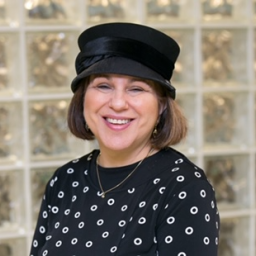Covid has brought many opportunities and challenges to Jewish day schools. We were able to stay open, for the most part, during Covid, and this has led to a new influx of students. The problem for the Hebrew departments in many schools during Covid has been learning how to adapt and adjust to the large addition of so many new students, a challenge Hebrew teachers could not have predicted.
Adapting to Educate New Students
At our school, the Melvin J. Berman Academy in Silver Spring, Maryland, we have seen tremendous growth, receiving a number of lateral entry students. Some students moved into our school from public schools in our area, which remained shuttered until March 2021. Some moved into our school from other Jewish schools that focus more on Biblical Hebrew than modern Hebrew. Other students, recent transplants from different states, came from schools that did not use the same type of Hebrew curriculum as ours. We have also received a fair number of new students from Israel along with heritage speakers who live in the US.
In our school, all of these lateral entries created a new issue for our Hebrew department. In past years, we were really quite spoiled because most of our classes were relatively homogenous by level. There was always a certain range of students in all of our classes, but most of our students belonged at the levels in which they were placed. The lateral entry students have presented a new issue for our department, for the new students did not necessarily fit neatly into our already existing classes. Our classes were suddenly rather heterogeneous. In particular, we now have many novice learners in our beginner classes who are really not at the same level as the rest of the class.
In an ideal world, we would have been able to open a mechinah or ulpan class for these new students so that we could try to catch them up to the beginner level before admitting them to these classes. However, we have an additional challenge: staffing. We have been struggling since the beginning of this year to find enough qualified Ivrit teachers to staff all of our regularly scheduled classes, and we certainly did not have the staff to open any new Hebrew classes for these new students.
A separate issue arose at the honors level. New students who tested into the honors classes were sometimes above the level of the existing class because they are either heritage or native speakers. So challenges presented themselves at almost all of the levels in each grade. While we had more lateral entry students in 7th and 9th grades, almost all of the middle and upper school classes have encountered this issue.
Expanding our Differentiation Toolkit
This has led to an interesting dilemma for our teachers to manage.
All of our teachers have needed to be more flexible and begin differentiating the needs of their students in the classroom. This has required strategies like flexible grouping for students, and sometimes even different types of groups in one class. Sometimes we create groups where there are some stronger students who can help to guide some of the weaker students. At other times we place the weaker students in one group so that we can work with individual groups within the class.
We have also needed to give students more choice and opportunity to learn at their own level and at their own pace, especially when it comes to vocabulary and grammar. For this reason, teachers sometimes have to prepare several versions of a worksheet for students in the same class. For the higher classes, teachers have acquired new materials for the heritage or native speakers so that they can progress at their own pace while the rest of the class learns the curriculum originally planned.
Our teachers have been doing PBL (project-based learning) and PBLL (project-based language learning) in their classes in order to differentiate for students as well. Project-based language learning is an instructional approach that contextualizes learning by presenting the students with problems to solve or products to develop through the use of new lessons in the target language; students need to apply the new vocabulary and grammar acquired in the target language to the projects that they are researching. Using PBL and PBLL allows students to show proficiency in their vocabulary and grammar skills as they research a particular issue related to the unit of study. Students can be given a rubric with different options so that the needs of individual students are being considered in the area of assessment.
Another area that needs quite a bit of flexibility is reading fluency and comprehension skills in Hebrew. Teachers often need to give flexible options through choice boards, so that students can tackle comprehension of texts at their own level and at their own pace.
All of this has required teachers in the Hebrew language department to work much harder this year to prepare differentiated lessons for their classes. They need to concentrate on building basic vocabulary skills and creating games to test these new skills. They need to help guide the lateral entry students while continuing to challenge the other students in the class-not an easy balance at any time and especially during Covid.
Collaboration is very important under these circumstances because teachers need to find innovative ways to meet the new challenges of their classrooms. By working together as a cohesive unit, they are able to bounce ideas off of one another to determine the best way to meet the needs of all of the students in their classrooms.




